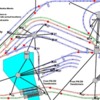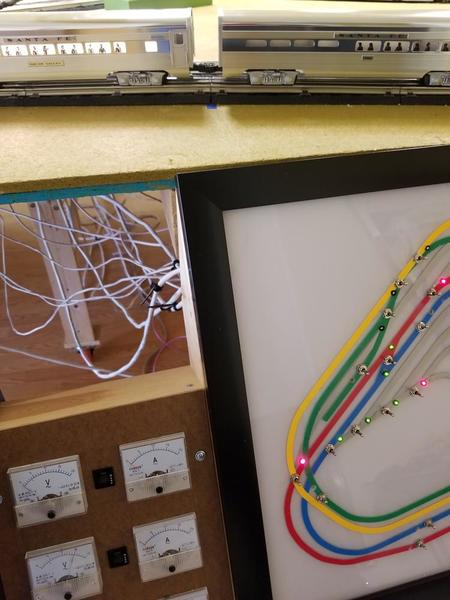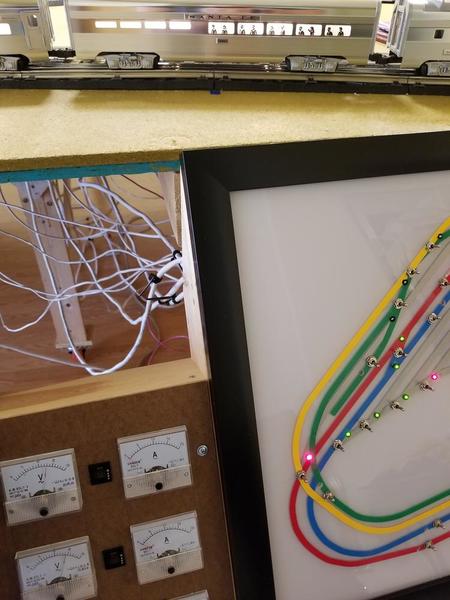Hello Everyone. This past Friday I posted with great excitement that my layout was finally operational under DCS. And it still is.......sort of. Mmmmm....maybe not.
I have been operating MTH's ES44AC (Model 20-20093-1) diesel under DCS on my layout with good success. That means I get the dreaded "RF OUT OF RANGE" message maybe 10% of the time during operation.
I decided to add a completely different MTH engine (after removing the ES44AC from the track) to see how it would operate under DCS. Am I glad I did (or...am I?). I added MTH's 2-8-8-2 Y6b Steamer (Model 30-1163-1) to the layout/DCS.
Oh....My....God!....what a MESS! Every....and I mean EVERY button pushed on the DCS Remote issued the dreaded "RF OUT OF RANGE" message (this message is getting to be like Microsoft Windows dreaded Blue Screen of Death)! Wow :-(
After doing a lot of searching and reading about this message and the results I was getting with the Y6b Steamer; this made me rethink my implementation of DCS on my layout.
As a result, I believe I've misinterpreted the recommendation to "centrally locate" the TIU's. My current implementation has the TIUs located next to each other right in middle of my table with the distribution points to the tracks pretty far from the TIUs themselves.
As a result, I am thinking about redoing the location of the TIUs and distribution points as show in the picture below.
Before I start, I would GREATLY appreciate your thoughts/feedback on this implementation. I did not include a picture of the current implementation because it obviously has issues to begin with and will be redone.
BTW, the "open areas" on the picture are accessories that I removed for clarification purposes.
The following are some details about the implementation:
1. The TIUs are OLD....I bought them new about around 2003/2004?. I can provide the versions I have if necessary once I start making changes. I am running v5.0 of the software on them.
2. I used 14ga jacketed copper wire on ALL connections.
3. All wire-to-track connections are soldered.
4. I'm using Lionel's O gauge conventional track .....because I have a LOT of it and the cost to replace it would be VERY expensive!
5. Power is provided by four PW ZW transformers (each channel has it's own ZW).
6. I use Variable channels only on the TIUs because I plan to run Conventional engines as well as Digital (but not at the same time).
7. I have not implemented "magic lights" yet. With the demise of Radio Shack (they all closed in Arizona), I had to order them and are on their way.
8. The distribution points are 10 position barrier terminal strips with one piece jumpers on one side and track connections on the other. Two are used for each distribution point (one barrier strip for Red, one for Black).
9. Distribution point to Track connections go through their own 12VDC relays. The Track wire are connected so that they pass through the Relay contacts that are Normally Closed (NC). This means that in the very near future (once I wire it), each track block will be able to be switched off.
10. I know it is recommended that the TIUs be mount "at or above" track level. They are currently mounted under the table; which is probably the source of most of my "RF OUT OF RANGE" problems with the Y6b steamer. But I've read were some railroaders have their TIUs physically mounted on their control panels or even above the layout itself with good success. But those implementation confuse me in regard to keeping wire runs from the TIUs to the distribution points as short as possible. How are they not experiencing signal degradation with those long runs of wire?
11. DCS operation is done in Super TIU mode....again with good success with the ES44AC.
And there you have it. I value the forum's insight and feedback and look forward to hear from you all.
Thanks!










